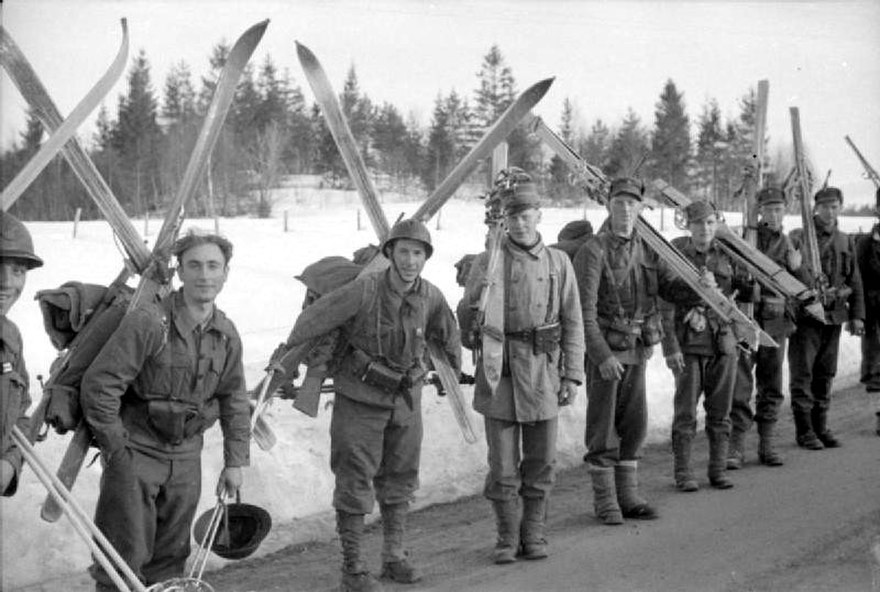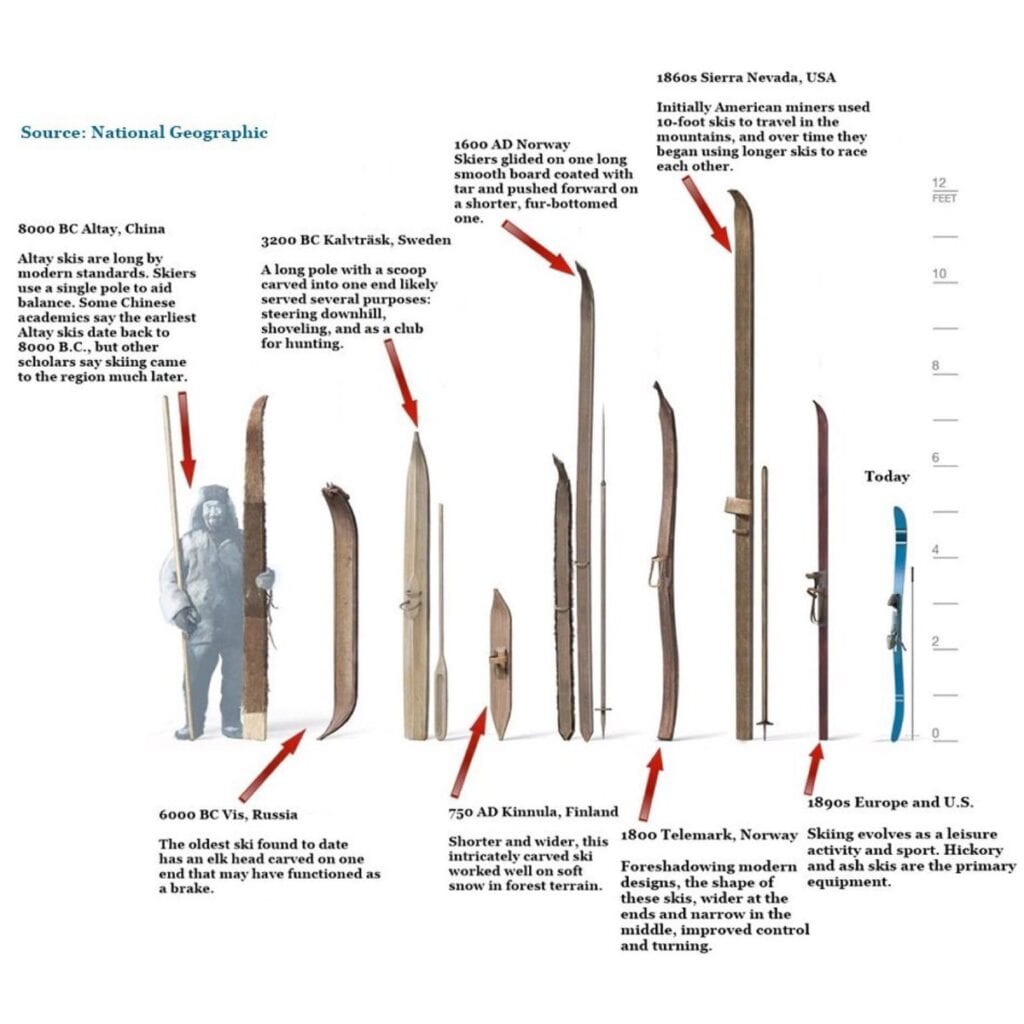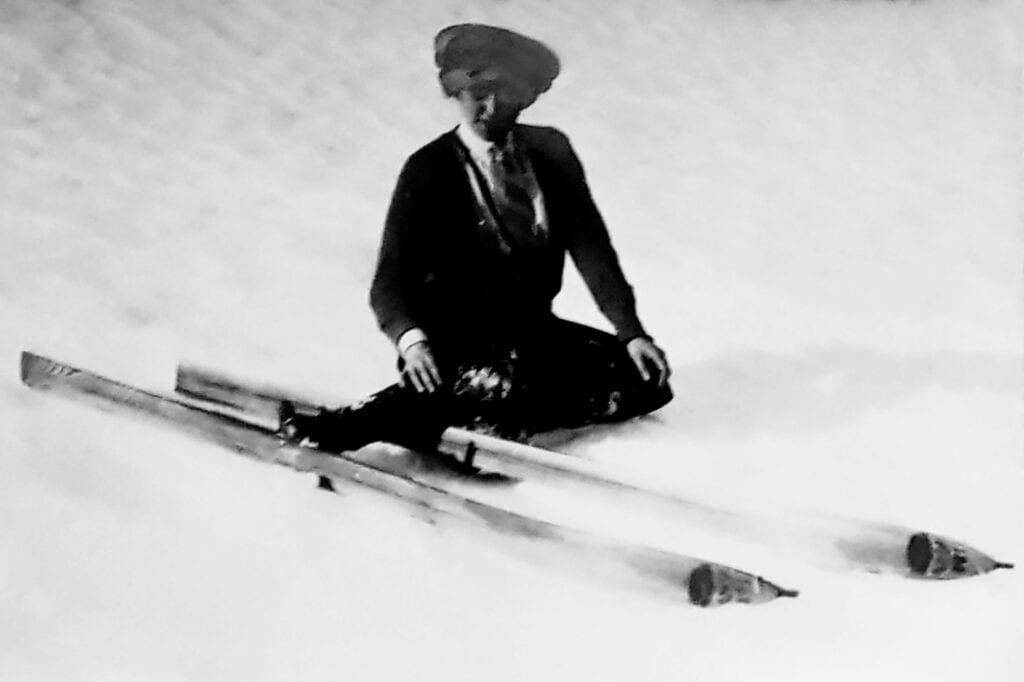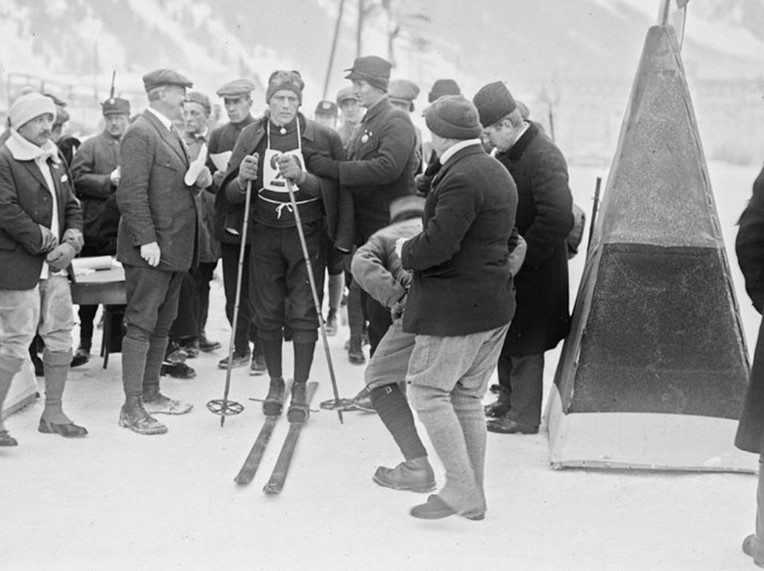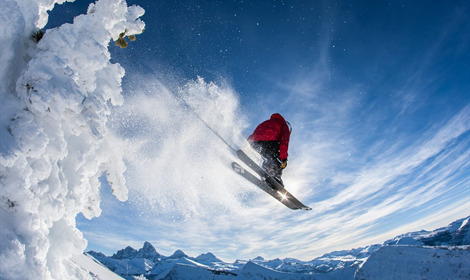Have you ever taken a moment mid chairlift to look down at the skis dangling from your feet and thought to yourself, “How strange is this?!”. Strapping your feet to two (almost) wooden planks doesn’t seem like the most obvious way to spend your time, but for many, it is what we look forward to most of the year! When we think about ski holidays today, we imagine ourselves sipping on vin chaud (or sake), munching on mountain meals and waking up early for first lifts, as we escape reality for a week full of adventure. However, the notion of skiing as a holiday is a far cry from its origins. We have put together a timeline for the history of skiing – so that next time a non-ski friend asks why you do this every winter, you’ll have more to say than vin chaud, long lunches on the mountain – and of course the adrenaline rush from skiing! (although this seems like a more than acceptable reason to us!).
WHEN WAS SKIING INVENTED?
Skiing is not a modern concept. According to Roland Huntford, the Author of Two Planks and a Passion: A Dramatic History of Skiing, cave drawings in Central Asia suggest that man used skis during the last Ice Age. The only evidence left of skiing that far back is in the form of artwork left behind by our ancient ancestors. The exact origins of skiing and who invented skiing are not clear, however one thing is: skiing was designed originally to create movement, to get from A to B for both hunting and transportation. The very first community believed to have skied were the Sami, the only indigenous people to Scandinavia throughout the Middle Ages. The Sami’s are widely credited with being the inventors of the ski.
WHEN WERE SKIS INVENTED?
The very first skis date back to 8000 years BC and were found in Northern China. They were made of 2-metre-long pieces of wood and were covered in horsehair (could you imagine skiing on those today!?).
THE BEGINNING OF ALPINE SKIING
Alpine (downhill) skiing wasn’t invented until the 18th Century, evolving from military considerations. The Norwegian army held skill competitions involving skiing down the slopes, navigating forests, and snowfields all while shooting guns. Today, the Biathlon at the Olympics very much keeps the spirits of these trials alive.
A gentleman called Olaf Rye from Norway became the first known ski jumper in 1809 (despite it not being invented yet). Olaf jumped 9.5 meters through the air in front of an audience and (miraculously) survived!
VITAL DEVELOPMENTS OF THE SKI
By the 1800s, skiing had become a popular sport and recreational activity. Norwegian’s had begun to start skiing the alps on racing trails. The design of the ski progressed throughout this period, and took a big leap forward with the invention of the Cambered Ski in Telemark, Norway. They found that this ski distributed the weight of the skier more evenly across the length of the ski due to its bow-shape. This also prevented the ski from sinking into a hole (something to remember when you are skiing in deep powder, or if you have been eating a lot of fondue during your holiday!).
Sondre Norheim invented the Telemark Ski in 1868, the first ski that featured a side cut which allowed users to carve, rather than slide sideways. This changed the face of skiing forever. Skiers were now able to choose a line with precision. As a result of the developments that had been made by Norwegian’s, two different ski techniques were developed and were named after the Norwegian mountains where they were invented: Telemark and Christiana.
Below you can see Mabey Ski founder Nickie Mabey‘s great grandmother Dorothy on a traditional set of straight, wooden 230cm skis, in 1912 (in Adelboden, Switzerland)! Read more about the Mabey family’s skiing history here.
In 1928, the steel edge ski was invented by Rudolph Lettner from Salzburg, Austria. These skis gave a much better grip on the snow and allowed skiers to carve into downhill turns. A few valleys over at the same time, Hannes Schneider developed the stem turn and parallel turn, a new style of skiing – techniques that are still used and taught today. Schneider founded the first ever ski academy in St Anton named ‘Albergschule’ and featured in many of the first ski films – he is now remembered as a pioneer in skiing.
By the 1930s, everyone was skiing! First in Europe and North America, and then later in New Zealand, Japan, Australia, Chile and Argentina. Hannes Schneider went over to Japan in the 1930s and introduced more developed skis from Europe. Schneider was put on the Japanese payroll to give lessons to the public, which was done on a mass scale, with thousands of people being taught at once on Mount Fuji. The lessons were apparently taught through the use of a loud speaker. This marked the beginning of the first ‘skiing boom’ in Japan.
OLYMPIC SKIING
In 1924, the first Winter Olympics was held in Chamonix, France. To begin with, the games did not feature downhill skiing. Only the more established Nordic Skiing was featured. The growing love of downhill skiing was becoming apparent, and it was soon included in the 1936 Winter Games hosted in Germany.

